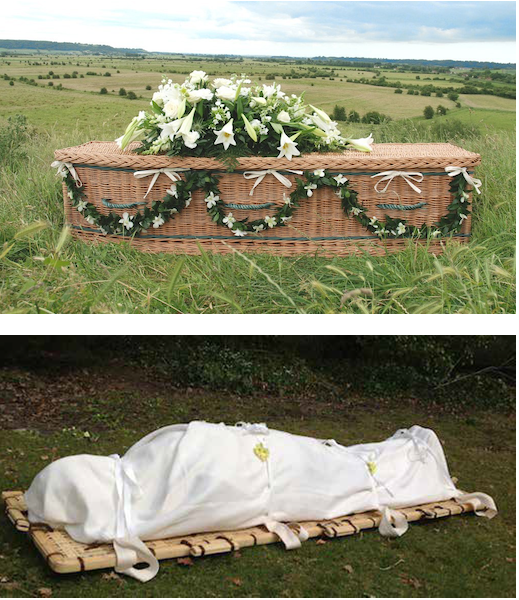Editor’s note: this is the latest in a series of posts about natural burial co-written by Kent Burreson and Beth Hoeltke. Download their free Bible study “Natural Burial: The Final Journey” (which also includes a burial planning guide).
In the midst of this pandemic, especially in viral hotspots, we have seen the images of the bodies of the dead. The pained faces of loved ones who cannot bury their beloved dead as they desired have saddened us. These unusual and challenging times ask us to give even more intentional consideration to how Christians might best care for the bodies of the baptized at their deaths.
Whatever we do for the bodies of the baptized should be consistent with our identity which flows from the story of God the Creator. God created our bodies from the earth. God recreated them through the death and resurrection of the Son. The enlivening breath of the Spirit will glorify them with complete physical, human life in the kingdom of God. Our provision for the bodies of our deceased brothers and sisters should proclaim and practice that story toward its goal. This means that burial in the earth, following the pattern of Jesus’ own burial, is the practice that best reflects God’s story about his human creatures. God will raise our bodies—created from the earth and restored to new life through our baptism into the risen Jesus—physically on the Last Day. We will live a full bodily life in God’s rule and reign in the new heaven and the new earth.

The placement of our bodies directly into the ground best represents this creation and recreation story of God for his creatures. It reflects the language of our funeral rite: “We commit the body to the ground…earth to earth.” Natural burial practices entail placing our bodies back into the earth from which they came without embalming and sealing the body off from the earth (i.e., liners and caskets made of non-biodegradable materials). The body is placed into the ground surrounded by simply made, readily biodegradable materials. These materials include: burial shrouds and wrappings of cotton or silk; coffins and caskets made from pine or other soft woods, woven fibers such as bamboo, cotton, rattan, willow, banana leaf, or seagrass, or cardboard. Shrouds simply wrap the body and can be made with handles for lowering it directly into the ground. Coffins mimic the body’s shape and caskets are rectangular in shape. Both often come with handles, can be designed and decorated in ways appropriate to the person being buried, and can be placed directly in the ground.
These burial practices allow us to entrust our bodies to the good earth God created with a positive impact on the environment as they decompose. In so doing, we confess the name of the Creator who fashioned our bodies from the earth and will recreate them on the Day of his coming.
Continuing with burial practices in our next post, we will explore the possibility of participating in digging the grave of our fellow baptized and describe natural burial cemeteries.


Leave a Reply
You must be logged in to post a comment.